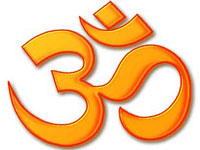Just In
- 3 hrs ago

- 3 hrs ago

- 7 hrs ago

- 13 hrs ago

Don't Miss
- Movies
 Pukaar Dil Se Dil Tak Promo: Sayli Salunkhe Impresses In First Video Of Sony TV Show, Details About Her Role
Pukaar Dil Se Dil Tak Promo: Sayli Salunkhe Impresses In First Video Of Sony TV Show, Details About Her Role - Sports
 Who Won Yesterday's IPL Match 34? LSG vs CSK, IPL 2024 on April 19: KL Rahul Stellar Batting Show Decimate Chennai Bowling
Who Won Yesterday's IPL Match 34? LSG vs CSK, IPL 2024 on April 19: KL Rahul Stellar Batting Show Decimate Chennai Bowling - Finance
 Rs 17/Share Dividend: Record Date On April 26; Buy The ICICI Group Stock To Be Eligible?
Rs 17/Share Dividend: Record Date On April 26; Buy The ICICI Group Stock To Be Eligible? - News
 Chinese President Xi Jinping Orders Biggest Military Reorganisation Since 2015
Chinese President Xi Jinping Orders Biggest Military Reorganisation Since 2015 - Education
 Exam Pressure Does Not Exist; Studying Punctually is Crucial; Says Aditi, the PSEB 2024 Topper
Exam Pressure Does Not Exist; Studying Punctually is Crucial; Says Aditi, the PSEB 2024 Topper - Automobiles
 Suzuki Swift Hatchback Scores 4 Star Safety Rating At JNCAP – ADAS, New Engine & More
Suzuki Swift Hatchback Scores 4 Star Safety Rating At JNCAP – ADAS, New Engine & More - Technology
 Dell Introduces AI-Powered Laptops and Mobile Workstations for Enterprises in India
Dell Introduces AI-Powered Laptops and Mobile Workstations for Enterprises in India - Travel
 Journey From Delhi To Ooty: Top Transport Options And Attractions
Journey From Delhi To Ooty: Top Transport Options And Attractions
Gnosis And Inspirations Of Upanishads

By means of the Higher Knowledge the wise behold everywhere Brahman, That otherwise cannot be seen or seized, That has no comparisons, no eyes or ears, no hands or feet; That is Eternal and Omnipresent, All-Pervading and Extremely Subtle; That is Imperishable and The Source of All Beings. - Mundaka Upanishad
The pure Brahman alone exists. That immutable Reality is the meaning of "That". There is no likeness of Him. His name is Great Glory (Mahad Yasah). His form is not an object of vision; no one beholds Him with the eyes. They who, through pure intellect and the Knowledge of Unity based upon reflection, realise Him as abiding in the heart become immortal. - Svetasvatara Upanishad
Om. Infinite is That Brahman, infinite in this manifested universe. From the Infinite Brahman proceeds the infinite. After the realization of the Great Identity, after the cosmic dissolution, when the infinity of the infinite universe merges in the Infinite Brahman, there remains the Infinite Brahman alone. - Brihadaranyaka Upanishad
The wise man beholds all beings in the Self, and the Self in all beings; for that reason he does not hate anyone. To the seer, all things have verily become the Self: what delusion, what sorrow, can there be for him who beholds that Oneness? - Isa Upanishad
When all the desires that dwell in the heart fall away, then the mortal becomes immortal and here attains Brahman. When all the ties of the heart are severed here on earth, then the mortal becomes immortal. This much alone is the teaching. - Katha Upanishad
English translation by Swami Nikhilananda with minor modifications.
The esoteric scripture of Hindusim, Upanishad can be translated from the sanskrit as upa-ni-shad, coming from the verb sad - to sit with, and upa - at the feet of a master. Upanishads are oral teachings, realization and gnosis transmitted by the gnostics, yogi masters and mystics. They primarily discuss philosophy, meditation, and the nature of God; they form the core spiritual thought of Vedantic Hinduism. Considered as mystic or spiritual contemplations of the Vedas, their putative end and essence, the Upanishads are known as Vedānta ("the end/culmination of the Vedas"). There are at least 108 Upanishads, each of different length. If collected in one volume, they would be approximately the combined size of the Judaic and Christian Testaments. Composed over a span of more than 1500 years, the oldest is dated between 800 and 400 b.c.e., the youngest from the Middle Ages.
-
 insyncDara Shikoh: The Mystic Brother Of Aurangzeb Who Translated Upanishads Into Persian
insyncDara Shikoh: The Mystic Brother Of Aurangzeb Who Translated Upanishads Into Persian -
 anecdotesConsciousness In Upanishads Story-Osho
anecdotesConsciousness In Upanishads Story-Osho -
 anecdotesTranscending Words
anecdotesTranscending Words -
 anecdotesThe Light That Lights All!
anecdotesThe Light That Lights All! -
 thoughtLiving in Freedom and Enquiry-Part III
thoughtLiving in Freedom and Enquiry-Part III -
 swami chinmayanandaVeda Vyasa - Part II
swami chinmayanandaVeda Vyasa - Part II -
 anecdotesThe Power Of The Brahman
anecdotesThe Power Of The Brahman -
 swami chinmayanandaVeda Vyasa - Part I
swami chinmayanandaVeda Vyasa - Part I -
 love and romanceThe Power Of Words In Romantic Relationships
love and romanceThe Power Of Words In Romantic Relationships -
 shirdi sai babaShri Sai Satcharitra-Chapter-41-Part IV
shirdi sai babaShri Sai Satcharitra-Chapter-41-Part IV -
 swami chinmayanandaReligion Chastens Life
swami chinmayanandaReligion Chastens Life -
 faith mysticismContribution Of Hinduism To Modern Day Management
faith mysticismContribution Of Hinduism To Modern Day Management


 Click it and Unblock the Notifications
Click it and Unblock the Notifications



